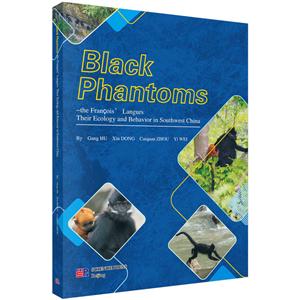-
>
湖南省志(1978-2002)?铁路志
-
>
公路车宝典(ZINN的公路车维修与保养秘籍)
-
>
晶体管电路设计(下)
-
>
基于个性化设计策略的智能交通系统关键技术
-
>
德国克虏伯与晚清火:贸易与仿制模式下的技术转移
-
>
花样百出:贵州少数民族图案填色
-
>
识木:全球220种木材图鉴
黑叶猴生态行为研究(英文版) 版权信息
- ISBN:9787030570796
- 条形码:9787030570796 ; 978-7-03-057079-6
- 装帧:一般胶版纸
- 册数:暂无
- 重量:暂无
- 所属分类:>
黑叶猴生态行为研究(英文版) 本书特色
本书基于中国贵州东北部麻阳河自然保护区的5个黑*种群六个月的前期调查、14个月的集中野外调查,系统研究分析了面对人类干扰和生态压力,黑*(Trachypithecusfrancoisi)在取食、活动、时间分配、种群结构、社会行为和繁殖等方面的适应性。同时,收集婴猴行为发展和从出生开始的毛色变化的数据进行研究。本书可为从事灵长类科学研究、动物生态与珍稀动物保护方面的科研人员提供科学指导,也可为生物、生态学、野生动植物保护与利用的本科生及研究生,及自然保护工作者与管理部门人员提供参考。
黑叶猴生态行为研究(英文版) 内容简介
本书基于中国贵州东北部麻阳河自然保护区的5个黑叶猴种群六个月的前期调查、14个月的集中野外调查,系统研究分析了面对人类干扰和生态压力,黑叶猴(Trachypithecusfrancoisi)在取食、活动、时间分配、种群结构、社会行为和繁殖等方面的适应性。同时,收集婴猴行为发展和从出生开始的毛色变化的数据进行研究。本书可为从事灵长类科学研究、动物生态与珍稀动物保护方面的科研人员提供科学指导,也可为生物、生态学、野生动植物保护与利用的本科生及研究生,及自然保护工作者与管理部门人员提供参考。
黑叶猴生态行为研究(英文版) 目录
- >
苦雨斋序跋文-周作人自编集
苦雨斋序跋文-周作人自编集
¥5.8¥16.0 - >
自卑与超越
自卑与超越
¥12.7¥39.8 - >
推拿
推拿
¥12.2¥32.0 - >
伊索寓言-世界文学名著典藏-全译本
伊索寓言-世界文学名著典藏-全译本
¥9.3¥19.0 - >
月亮与六便士
月亮与六便士
¥15.1¥42.0 - >
朝闻道
朝闻道
¥8.8¥23.8 - >
二体千字文
二体千字文
¥22.4¥40.0 - >
莉莉和章鱼
莉莉和章鱼
¥13.4¥42.0
-
迷蒙星空-探天之路
¥14.5¥39 -
飞天起航
¥13.9¥35 -
航空工业出版社遥控模型飞机系列遥控像真模型飞机入门
¥20.2¥48 -
航天器自主导航技术
¥39.1¥112 -
国家出版基金 中国航天的历史使命
¥22.8¥68 -
航空超高强度钢的发展
¥25.9¥58





















